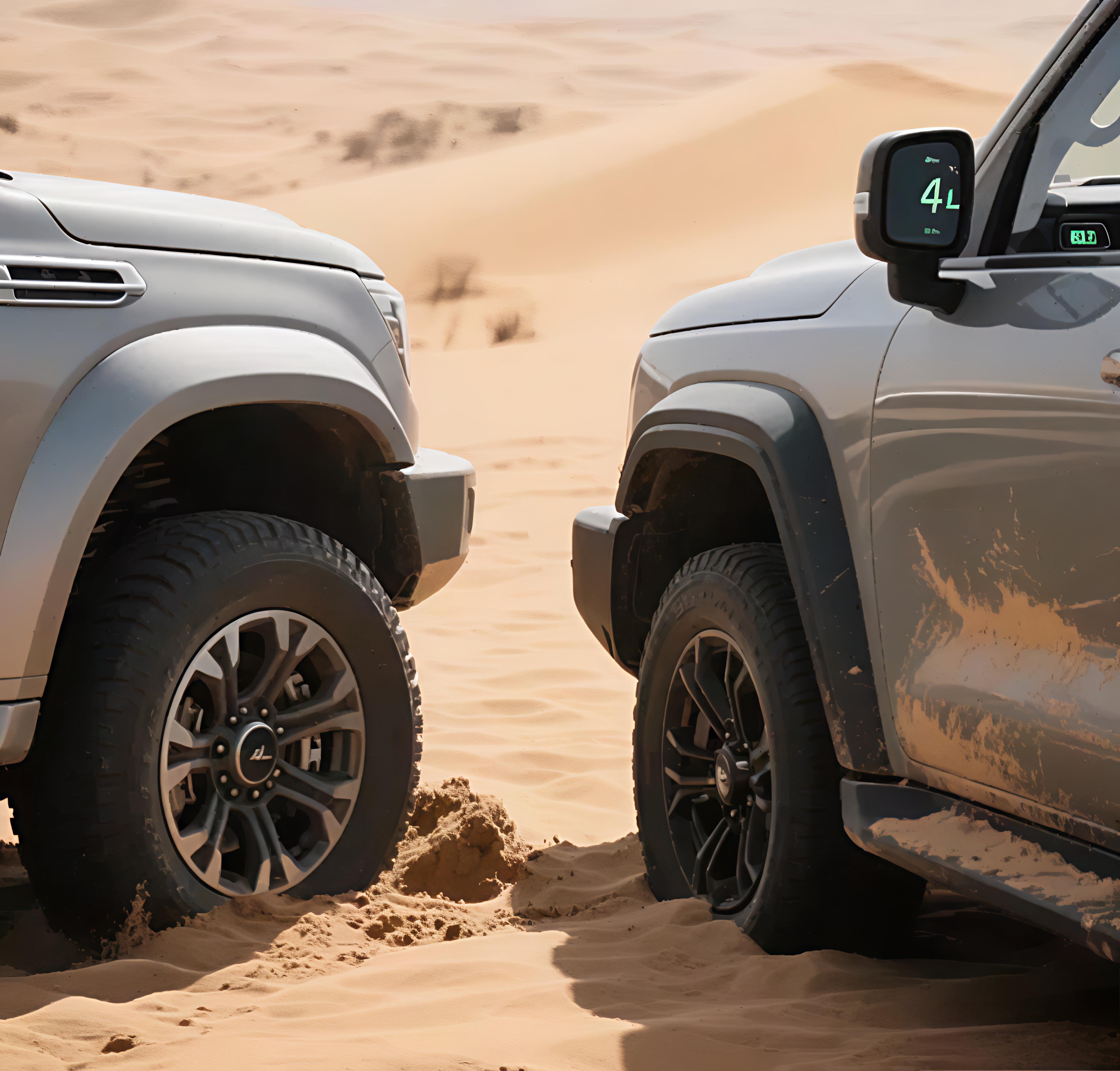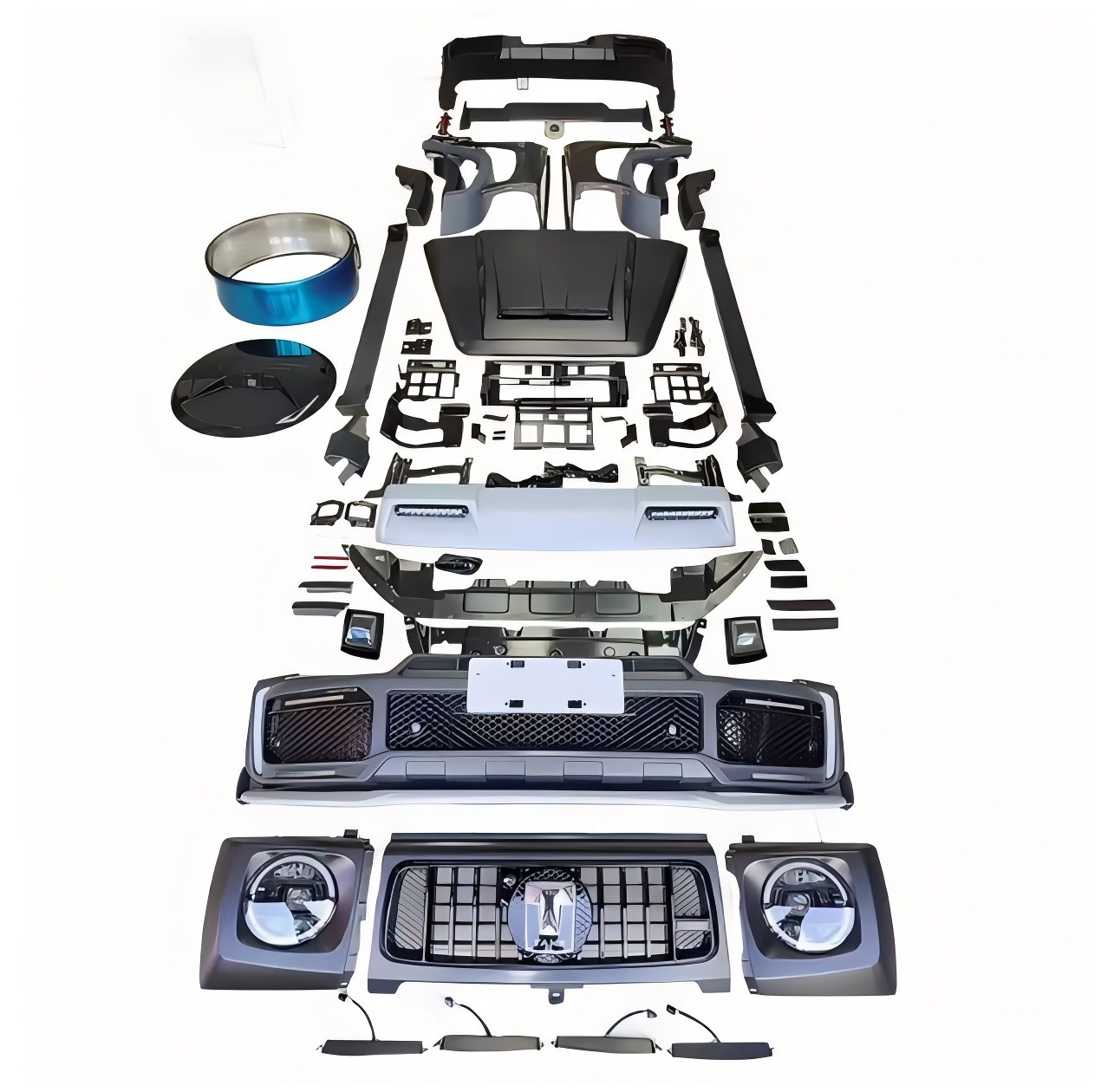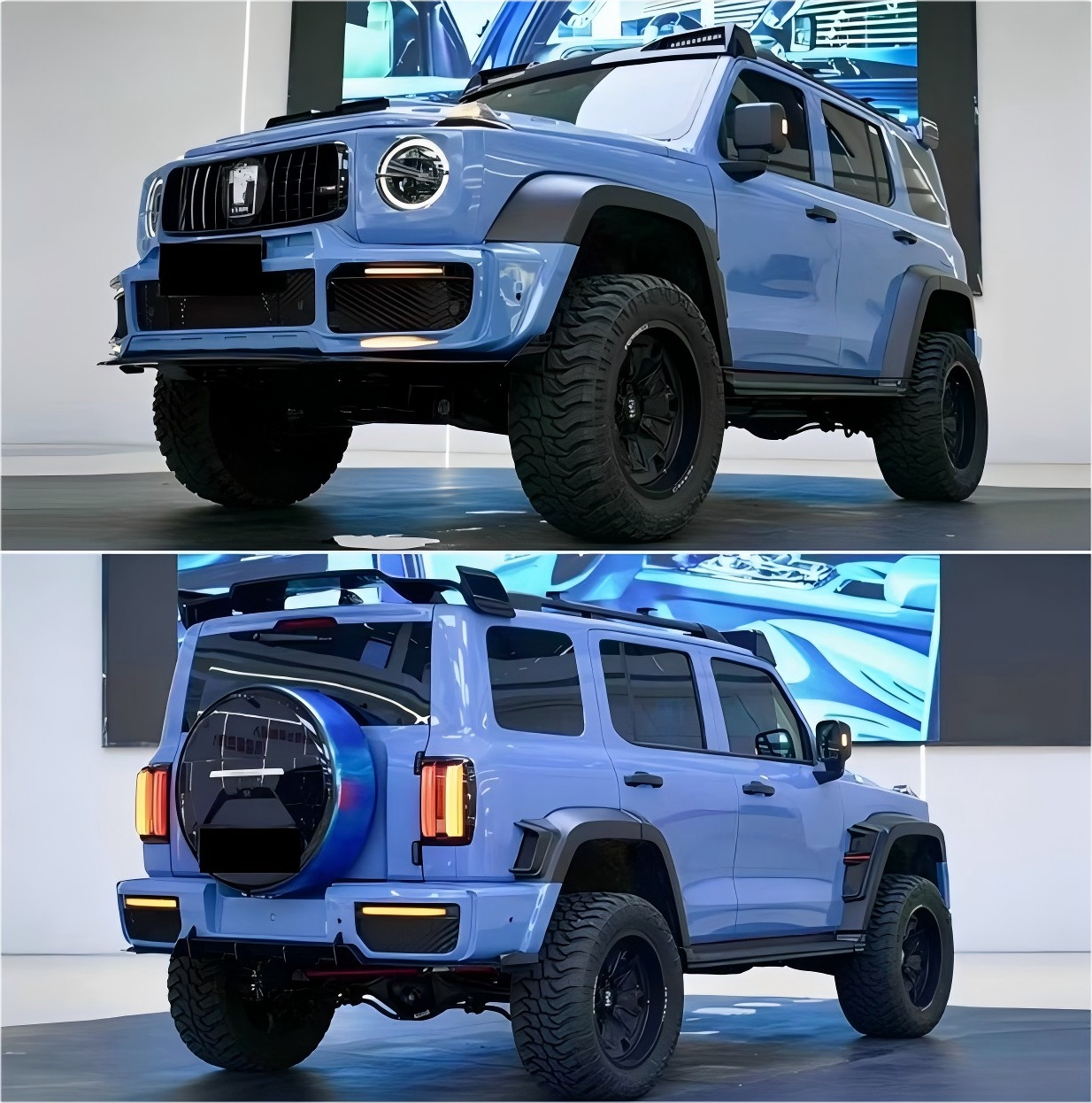

Not long ago, I went on a desert adventure to the Kubuqi Desert with a friend. The temperature was close to 40 degrees Celsius, and the sand was scorching hot. The moment I jumped out of the car barefoot, I almost leaped right back up—this sand was hot enough to cook pancakes! We had two cars with us: a white Haval H9 and a black Tank 300. We originally planned to explore the desert in a team, but shortly after entering the depths of the desert, we ran into trouble.
The first to have an issue was the Haval H9. While crossing a not-so-steep sand dune, its front wheels suddenly sank into the soft sand. The driver pressed the accelerator hard a few times, and the sand kicked up by the wheels sprayed like a fountain. As a result, the car sank deeper and deeper, until the front bumper was almost completely buried in the sand. I stood aside, stamping my feet in anxiety. Meanwhile, the driver of the Tank 300 next to us calmly adjusted the direction, pressed the accelerator slightly, and climbed over the sand dune as easily as a cat jumping up steps—much to my amazement.
The two cars showed significant differences in their desert performance. Take the approach angle, for example: I later roughly measured it with a small ruler, and the Tank 300’s front end was noticeably higher than the H9’s, giving it a larger approach angle. When driving over undulating sandy roads, the Tank 300’s front bumper barely touched the sand. When the Tank 300 went back to test the spot where the H9 had gotten stuck, its wheels also slipped a little, but with a slight adjustment of direction and sufficient power, it broke free easily, as if it were a game.
The four-wheel drive systems also performed differently in the desert. The Haval H9’s TOD four-wheel drive system works stably in the city, but it responded sluggishly on soft sand. After getting stuck, the electronic limited-slip system failed to engage promptly; by the time it reacted, the wheels had already dug two deep holes, making it hard to reverse out. The Tank 300, however, uses a part-time four-wheel drive system. After the driver shifted into low-range four-wheel drive, power was transmitted directly to all four wheels, delivering very direct force—unlike the Haval H9, which seemed to be struggling. A veteran driver in our group said it was like the difference between a manual transmission and an automatic one: in extreme situations, manual control is more reliable.
That said, the Haval H9 does have its advantages. With a larger body and longer wheelbase, it offers better stability than the Tank 300 when driving at high speeds on flat desert sections. There was a long downhill stretch where the Haval H9 glided down slowly with exceptional stability. The Tank 300, on the other hand, had a shorter wheelbase, so its body jolted noticeably when going downhill. The driver had to grip the steering wheel tightly to prevent it from veering off course. But in narrow sand gullies, the Tank 300’s flexibility shone—it could make a U-turn on the spot with ease. The Haval H9, by contrast, required multiple reverses and careful maneuvering to avoid its front or rear bumper hitting sand or rocks.
The power feel also differed between the two. When pressing the accelerator of the Haval H9, there was a noticeable lag, and the turbocharger didn’t respond promptly. A slight press on the accelerator on soft sand could easily cause the car to get stuck. Part of the reason it got stuck that day was also the driver’s imprecise control of the accelerator. The Tank 300’s power, however, came more aggressively. When I first drove it, I always struggled to control the depth of the accelerator—every press would send sand and stones flying. It took me a while to get the hang of it, realizing I needed to adjust the accelerator with great delicacy. When it comes to long-distance comfort, the Haval H9 has a clear edge. During our noon break, I could lie flat in the Haval H9’s back seat, which had ample space. The Tank 300’s rear seat, however, felt rather cramped, making long rides uncomfortable.
Modification potential is another point worth noting. Many off-road enthusiasts we met in the desert that day had modified their Tank 300s—some had replaced them with large-tread off-road tires, while others had added nitrogen shock absorbers. They looked very imposing and performed even better. The Haval H9 already comes fully equipped from the factory, with a rear locker and creep mode. But veteran drivers believe that due to its heavier body, the Haval H9 has higher modification costs, and the results are not as noticeable as those for the Tank 300. The Haval H9 that got stuck that day was in its factory state; if it had been fitted with beadlock wheels and the tire pressure had been properly reduced, it might not have gotten stuck so badly.
In the end, experience was what got us out of the predicament. The veteran driver in our group told us that tire pressure is the most critical factor in desert driving—reducing it to below 1.0 bar can handle most harsh road conditions. After the Haval H9 got stuck, we first released some air from its tires, then used the Tank 300’s winch to pull it out. The Tank 300 performed smoothly throughout the trip, though after returning, we found that its air conditioning filter was filled with sand; it took a long time to clean it up.
Looking back on this experience, both cars have their strengths. The Tank 300 is like an agile little wild cat, moving freely through the desert—it’s perfect for drivers who love challenging limits. The Haval H9, on the other hand, is like a steady old ox. While it may occasionally get into trouble, its spacious interior and strong cargo capacity bring peace of mind during long crossings of uninhabited areas.
Have you encountered any strange situations where your car got stuck during desert off-roading? Do you think short-wheelbase cars are more flexible, or long-wheelbase cars are more stable? Feel free to share your experiences in the comment section—I’d love to learn from them so I don’t make the same mistakes the next time I go to the desert!
SHIJUN is a professional manufacturer specializing in rugged off-road vehicle modification products,
with 10 years of R&D experience and over 200 global customer cases.
Recommended Products:
Tank 300 BBS Body Kit for Tank 300


For more products and case studies, please feel free to contact me to request product brochures and pricing!
Your Service Advisor:Ms Chris (Xingyu Chen)
Email:chrischen@czshijun.com
Wechat/WhatsApp:+86 13506123419
Facebook:https://www.facebook.com/share/15hHnP8a7V/
Scan the QR code now to connect on WeChat/WhatsApp
and receive exclusive discounts and technical support!


















